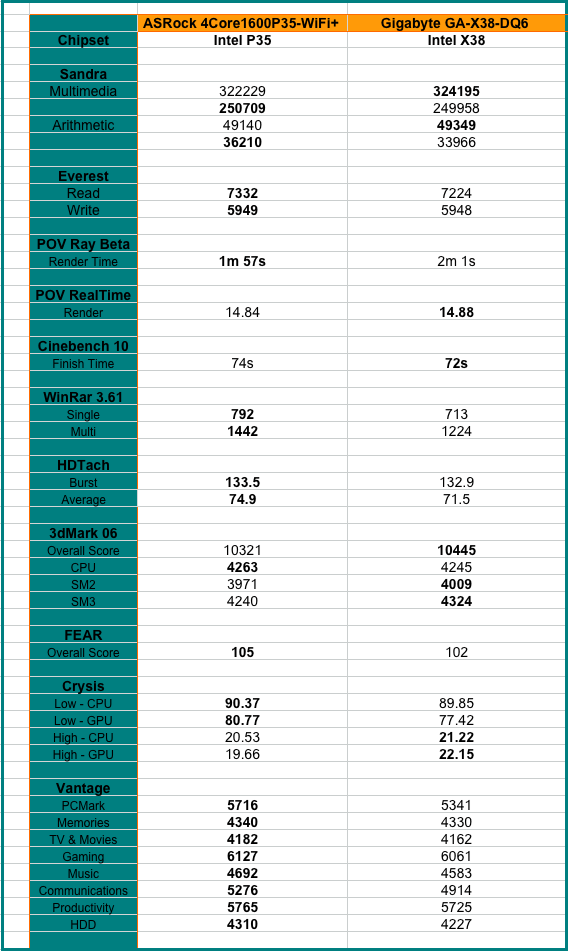Testing Results

When it came to the testing of the board, the results we got were, well, letí»s just say shocking! Not that we expected the ASRock P35 equipped board to be bad, we didní»t. The P35 chipset it a very good chipset that provides excellent performance. We just did not expect it to do better than a board that has the X38 chipset on it! After all, isní»t newer always better? Obviously not as ASRock decided to use the P35 for this board, and it pulled absolutely fantastic numbers.
Taking a closer look at the numbers shows us that the two boards were comparable when running our Multimedia and Arithmetic benchmarks from Sandra. They traded blows there. Everest gives us surprising results as we see the ASRock actually have better bandwidth, though only by a slim margin.
Our POV scores also show us just how close these two boards are. These boards pretty much are even in the real time ray tracing and in the rendering time in the Beta test.
HDTach showed that the ASRock 4Core1600P35-WiFi+ board does slightly better in disk performance. But when you move on to the 3dMark 06 results, the X38 board slightly beats out the ASRock.
The gaming results are where things get really interesting. In FEAR, the ASRock board scored the best score that we have gotten in this benchmark. it beats out the X38 board by 3fps. In Crysis, the ASRock board does very good and beats the Gigabyte X38 board when the settings are in low, but once we cranked it up to High settings, the X38 had just enough horsepower to edge out the ASRock board. Both boards would have been unplayable at the high settings though.
Vantage is a total sweep for the ASRock board. It was incredible to see this board do so well. I mean, after all, it is an older chipset.
I think this just proves what we discussed in our article on the Spider platform, that upgrades are not always upgrades. Sometimes they are just bragging rights.
The performance is there on the ASRock 4Core1600P35-WiFi, no question about that. So letí»s see how it does in the overclocking area.


